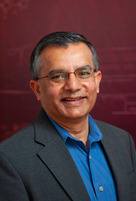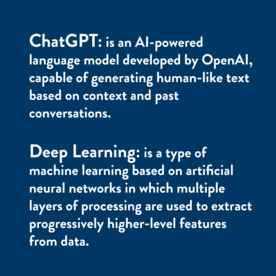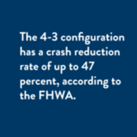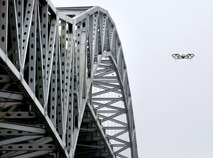MnDOT Innovation Focus
 Note from MnDOT’s Innovation Director
By Katie Walker, MnDOT’s Director of Research & Innovation

As we wrap up our three-part series on the "E3 mindset" - Experimentation, Empathy, and Empowerment - it's my pleasure to share some thoughts on the importance of empowerment and our commitment to fostering an innovative culture here at MnDOT.
Empowerment is all about providing the necessary support and tools to enable each one of you to excel in your roles and contribute to our collective success. Our journey to becoming a more innovative organization hinges on this core principle of empowerment.
When employees feel empowered, they are more engaged, motivated and committed to their work, which ultimately leads to higher productivity, improved performance and better organizational outcomes.
|
Share your innovative idea!

Our MnDOT Innovation Program is dedicated to making this a reality. We are here to assist you in nurturing your innovative ideas, to highlight the great innovations already happening within our department, and to provide you with the resources and training necessary to thrive in an environment of constant improvement.
We are introducing a short form to collect information on both new and existing innovations. Completing this form is a straightforward process that should only take 5-10 minutes of your time.
Once you submit your innovation, you can expect to hear from our Innovation Program. The follow-up might entail a short consultation to map out your next steps, brainstorming sessions to explore funding possibilities, or even connecting you with a colleague who is working towards a similar goal. The aim is to provide you with the support and tools you need to bring your innovations to life.
Thank you for your ongoing dedication and enthusiasm for innovation.
|
Harnessing the Power of Machine Learning in Transportation
By Jackie Jiran, Office of Research & Innovation
In the Office of Research & Innovation we’re seeing a growing number of research projects that use a variety of algorithms, data sources, and machine learning components. I reached out to two University of Minnesota researchers with the expertise to help me sort through the terminology and discuss emerging transportation opportunities.
Applying special data to reduce transportation emissions

Computer Science and Engineering Professor, Shashi Shekhar, has partnered with the Center for Transportation Studies since the 1990s to research transportation topics. He applies spatial, vehicle, and traffic data to identify linear “hot spots” in traffic behavior beyond a single point or intersection—which can be used to reduce emissions and energy use. Shekhar also directs the UMN’s new
AI Climate Institute, leveraging novel AI methods to revolutionize the agriculture and forestry industries, prioritizing climate-smart practices that will sequester carbon and boost their respective economies.
|
Analyzing big data to reduce snowplow fuel consumption

Mechanical Engineering Professor and Director of the Thomas E Murphy Engine Lab, Will Northrop, is a self-proclaimed “gearhead” focused on telematics related to emissions, vehicle performance, and alternative fuels. He takes a multi-disciplinary approach to his work and credits colleagues in Computer Science, like Shekhar and others, with data analytics expertise to help solve real-world problems in transportation. In the recently completed, MnDOT-funded study, “Using Advanced Data Analytics to Reduce Snowplow Fuel Consumption,” he used a tremendous amount of data from MnDOT snow maintenance operations over several winters to learn about granular fuel use during snow events, and developed algorithms to process it.
|
Increasing availability to data collection, processing, and storage

Shekhar and Northrop agree there is far more data available than we currently use. They reminded me that data collection and algorithms are not new, but our computing capacity has grown as processing speed and storage continues to decrease in cost. This has opened the door for machine learning models to learn from data—sometimes abundant, non-linear, and complex data! This then led to recent significant advances with AI and machine learning including ChatGPT and deep learning. These machine-generated models are not without problems, however. “We can do better than one size fits all, data-based information. AI has not figured this out yet,” says Shekhar.
Northrop says, “Machine learning can sometimes be a black box. Every vehicle manufacturer right now records thousands of parameters on passenger cars and trucks every day.” He says this can be a useful tool but it is very important that all factors are considered in the model when we explain what contributes to the results. For example, speed and emissions can vary among individual drivers, and vehicle types and sizes, but other factors like infrastructure geometry, mode use, and road and weather conditions contribute as well.
Expertise adds value to an abundance of data
We are seeing terminology like “physics informed” and “knowledge guided” machine learning in recent research approaches. Experts like Shekhar and Northrop can apply their knowledge and experience to constrain the machine-generated models. For example, researchers can alter a model to isolate emissions data from an idling bus versus that from traffic queues during a back-up, which could be an important distinction for design. Shekhar calls this step “guardrails and seatbelts”, involving post-processing of data to check errors and fix models, especially when there is high risk with any errors such as in transportation. Safety risks are also addressed in human factors applications and simulations.
The future of machine learning and transportation
While industry has historically been on the leading edge of this technology, the Obama Administration’s Big Data Research and Development Initiative committed $200M in 2012 to federal agencies for research, technology, education and training. This support and public demand continue to bolster and uncover the need for more work in this area from everyone—including public agencies.
Both professors see a wide range of applications for the future of machine learning in transportation:
-
Preparing for connected and automated vehicles, including onboard vehicle data connected to infrastructure.
-
Planning for electric vehicles, including where to place charging stations, range anxiety, and route selection.
-
Improving health and safety related to vehicle emissions, roadways, work zones, and intersections.
Northrop acknowledges the challenges that accompany the use of data, considering privacy, politics, ethics, behavior, and enforcement. “Understanding how these tools work, keeping on top of trends, and having the capability to continue doing research in this area is important,” he said.
|
Related Research
Snelling Avenue Road Diet Awarded $1 Million FHWA AID Grant
In 2024, MnDOT crews will reconfigure Hwy 51/Snelling Ave. between Montreal Avenue and Ford Parkway in St. Paul to improve safety and comfort for all road users. This project is funded in part by a $1 million grant from the FHWA’s Accelerated Innovation Deployment (AID) Program.
Video shows shows how the road diet will alter Snelling Avenue.
This project will mean a number of changes to the roadway. Traffic will be reduced to one lane in each direction with dedicated left turns through a center median. The city will reconstruct the traffic signals at Montreal and Snelling Avenues, and remove little-used parking along Snelling to add a new 10-ft. multiuse trail on the east side of the street, consistent with St. Paul’s Bicycle Plan.
The process of converting a four-lane road to three lanes — two travel lanes with a turning lane and median in the middle — is called a “road diet” or 4-3 conversion, because of the reduction in lanes.
Road diets are a proven FHWA safety countermeasure, with benefits including:
- Reduction of rear-end and left-turn crashes due to the dedicated left-turn lane.
- Reduced right-angle crashes as motorists entering from side streets cross three lanes instead of four.
- Fewer lanes for pedestrians to cross.
- Opportunity to install pedestrian refuge islands, bicycle lanes, on-street parking, or transit stops.
- Traffic calming and more consistent speeds.

FHWA’s AID Program is designed to accelerate the implementation and adoption of innovation in highway transportation. There are 127 AID demonstration projects across the nation. MnDOT’s St. Paul project and its selection process could serve as a model for road diets elsewhere in the state, demonstrating a low-cost way to improve safety and quality of life.
|
Not every four-lane road is a candidate for a road diet. What made this 0.4 mile stretch of Snelling Ave. the right fit? A variety of factors like traffic volume, parking utilization, and safety concerns.
- Three-lane conversion studies have demonstrated a recommended upper limit of average daily traffic of 20,000 vehicles per day. Snelling Ave. carried only 13,100 vehicles per day, as of 2017.
- Existing parking in the area is underutilized at 1%. Reutilizing the space for amenities including a trail, upgraded sidewalk, planted boulevards, and stormwater infiltration trenches can provide greater community benefit.
- Lastly, a 2015-2019 crash analysis of this area resulted in a crash rate index above 1, illustrating the need to improve pedestrian safety. The road diet will reduce the distance pedestrians have to cross, minimize the threat of crashes, and calm traffic.
“While this isn’t Metro District’s first road diet on a Trunk Highway, it’s our first road diet driven primarily by safety improvements, rather than pavement preservation,” said Jesse Thornsen, MnDOT’s Metro District North Area Coordinator. “We’re hopeful this proven safety strategy will improve comfort for all road users in our St. Paul community.”
Let’s Get Street Smart Tool Empowers Minnesotans on Transportation Funding
MnDOT is responsible for making sure our system serves Minnesota now and in the future. We use different tools to help make smart decisions about when and where to invest. MinnesotaGo developed a fun and interactive Spending Transportation Money Wisely game, to help Minnesotans understand how benefit cost analyses and lifecycle cost analyses are used to enhance and maintain our system. The hope is that this will empower citizens and provide them with information they need to thoughtfully review the draft Minnesota State Highway Investment Plan, available for public comment through November 8.
Minnesota Technology Receives National Honors

Governor Tim Walz today announced that three State of Minnesota projects won top honors at the 2023 National Association of State Chief Information Officers (NASCIO) State IT Recognition Awards. Minnesota’s Frontline Worker Pay Program, drone bridge inspections, and a driver and vehicle services’ virtual chatbot were honored from a list of 31 finalists nationwide across 10 categories, ranging from cybersecurity and business-process innovation to digital services and innovation.
“We are so proud to be recognized as a national leader in how we use technology to improve the lives, safety, and experiences of Minnesotans,” said Governor Tim Walz. “We’re committed to building new, creative ways to use technology to deliver the best services to Minnesotans.”
MnDOT’s drone inspection multi-year project received the Emerging and Innovative Technologies State IT Recognition Award. The drone bridge inspections take advantage of 3D modeling to provide better quality data and asset management, improve safety for bridge inspectors and the public, and reduce traffic delays.
“Our bridge inspectors and crews work hard to ensure that Minnesota bridges are safe for the thousands of motorists and pedestrians who cross them daily,” said MnDOT Commissioner Nancy Daubenberger. “Through the use of technology—such as drones, 3D digital models and augmented reality—we have been able to improve the quality of Minnesota bridge inspections and help reduce safety risks, traffic disruptions and costs.”
Access the press release from NASCIO’s website announcing the full list of award recipients.
|
MAASTO Honors Two Minnesota Projects with Regional America's Transportation Awards
Innovation Events

|